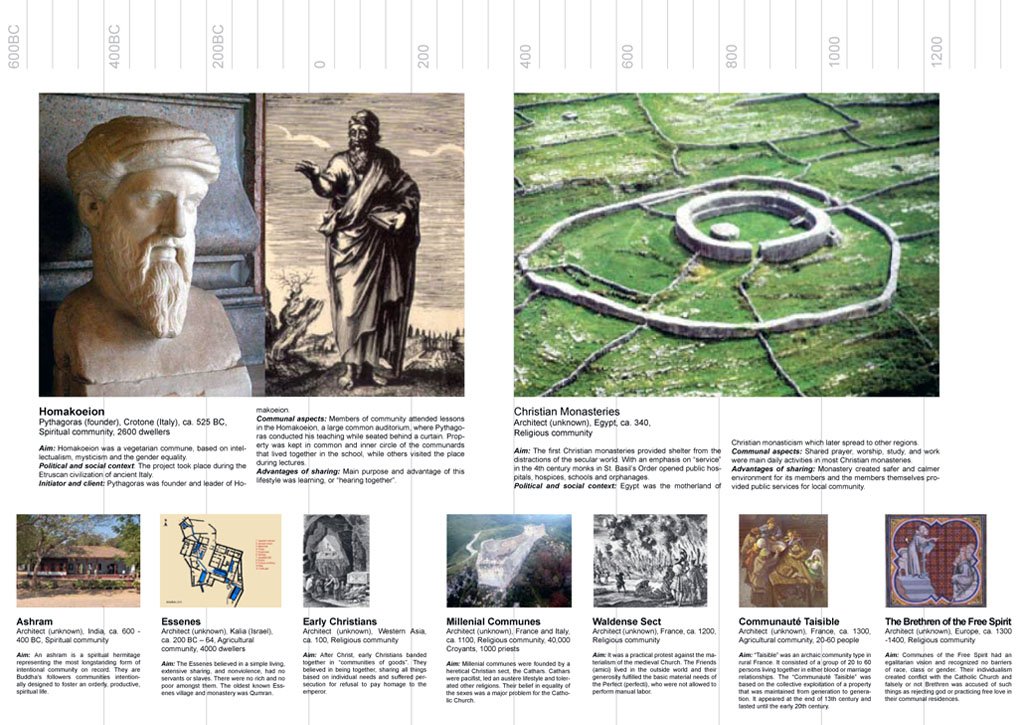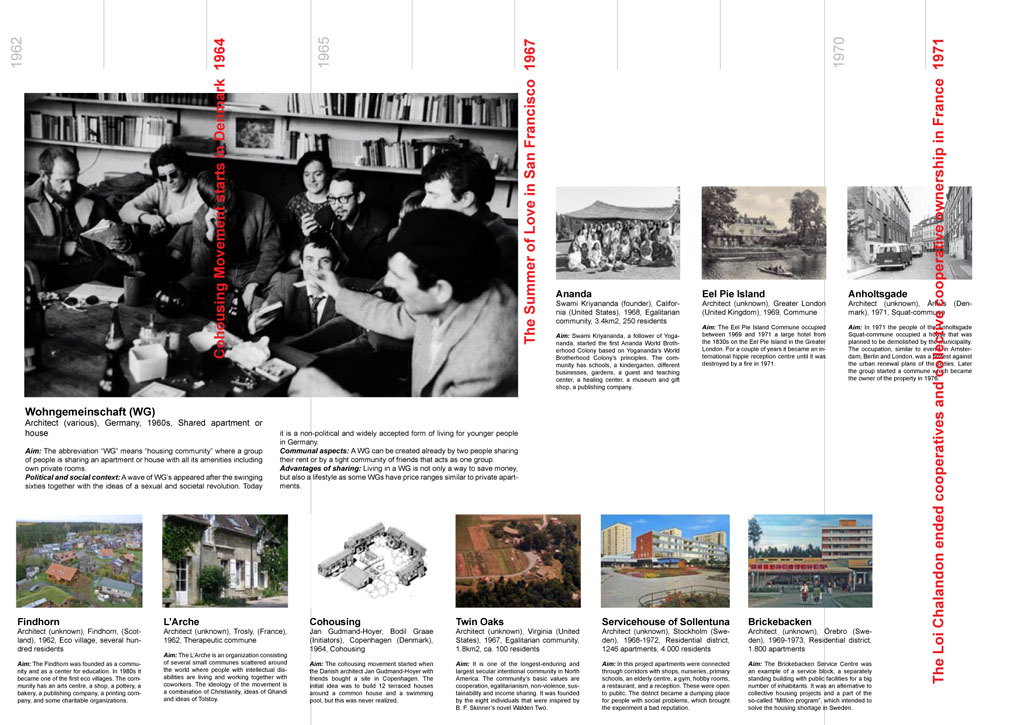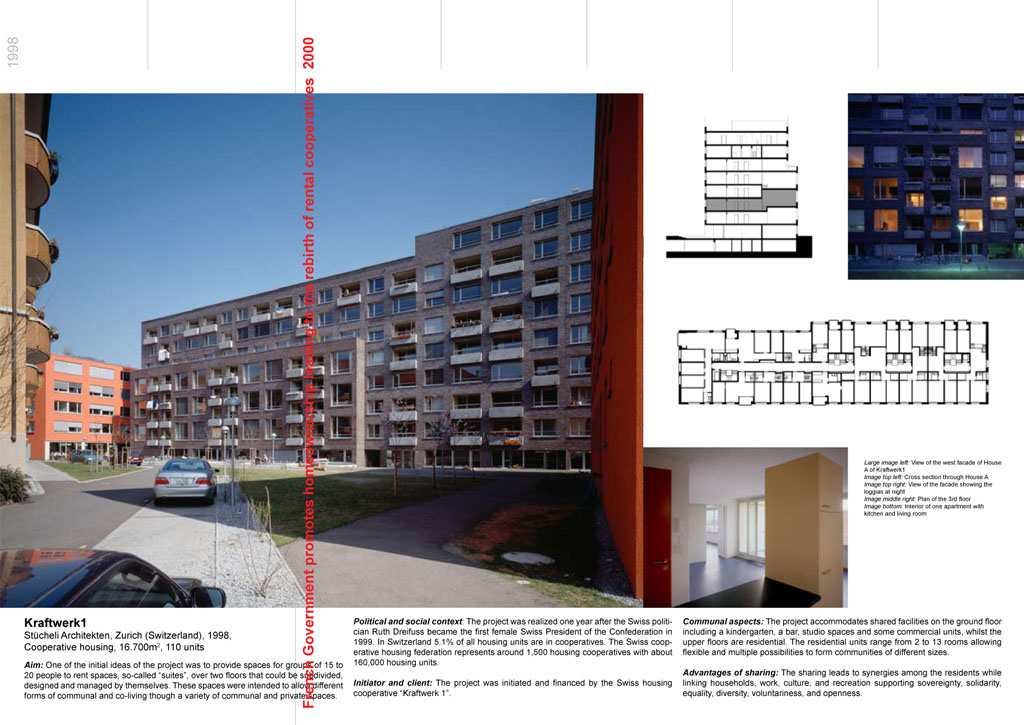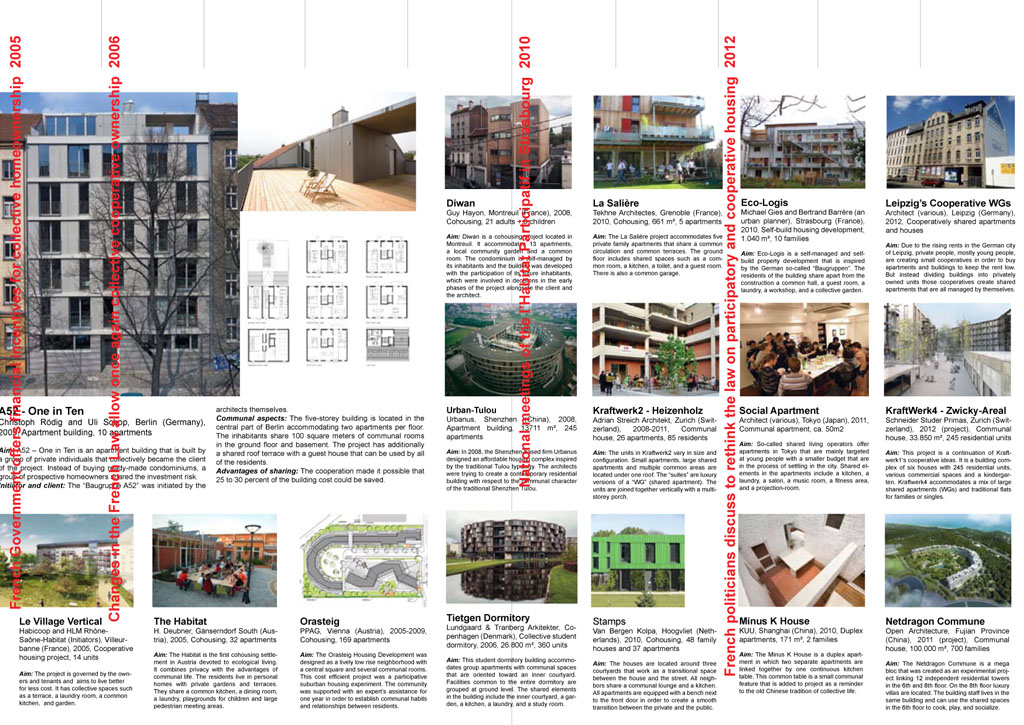13-03-23 // 2500 YEARS OF COMMUNAL LIVING

The concept of ‘Communal Living’ has been present in various forms over the last 25 centuries. It has pursued different objectives: grouping together people with the same ideology, improving housing conditions for workers, providing a larger number of homes in times of housing crises, be-coming a ‘social condenser’ and bringing people closer to a ‘socialist’ way of life, liberating women from domestic tasks and thus facilitating their incorporation into the labour market etc… Communal Living always answered a need or an aim in each epoch.
Nowadays, our Co-Residence project aims to help the production of sustainable apartments; in other words, more affordable housing, consuming less energy. The previous organizational models of communal housing will not succeed in the pursuit of these aims. Contemporary society is more individualistic and heteroge-neous than ever before. Some fundamental changes in size and organization need to be applied:
– Co-Residence can only be applied on a small scale: 2-4 families share basic elements and up to 6-10 extra services such as laundry rooms or a spa. At the Guise Familistère (19th c.) almost two thousand people shared services.
– Co-Residence keeps the structure of a home. To guarantee that the shared spaces are perceived by their inhabitants as parts of their ‘own’ apartment, they are an extension to their private areas. In previous communal projects the common programme was disconnected from the private ele-ments, either placed in an annex building, such as the Narkomfin block in Moscow (1928), or placed in the ground floor such as the apartments of Ericssongattan Street in Stockholm (1935)



At the Guise Familistère (19th c.) almost two thousand people shared services

In the Narkomfin block in Moscow (1928) the common programme was disconnected from the private elements in an annex building



Kraftwerk1 by Stücheli Architekten, Zurich (1998)

Title: 2500 Years of Communal Living
Project: Research project on communal living
Date: March 2023
Type: Commissioned research
Programme: Urban and architectural research
Status: On-going
Client: Atelier International du Grand Paris (AIGP)
Team: Bernd Upmeyer, Matas Siupsinskas, Mario Yáñez Aller (BOARD); Beatriz Ramo, Ieva Cicenaite, Julie Pommier, Mikel Mujika, Lydie Seurre (STAR strategies + architecture)